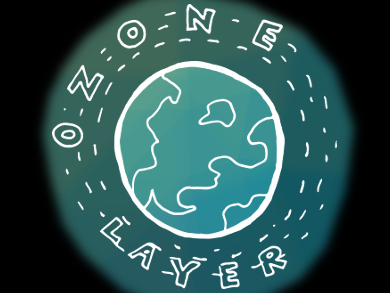Measurements show that trichlorofluoromethane has been released into the atmosphere since 2012. The propellant is one of the three worst ozone killers and was banned in 1987 as part of the Montreal Protocol.
The concentration of stratospheric chlorofluorocarbon (CFC) residues has been reviewed by Stephen A. Montzka, US National Oceanic and Atmospheric Administration (NOAA), Boulder, CO, USA, and colleagues. The team evaluated data from three measurement networks that constantly monitor the levels of CFCs and their degradation products in the atmosphere. They found that the rate of decline of atmospheric trichlorofluoromethane concentrations was constant from 2002 to 2012, but then slowed by about 50 % after 2012. This is despite the fact that the reported production of the compound is close to zero since 2006.
These results suggest an unreported production of the banned substance. From 2014 to 2016 alone, more than 14,000 tons per year were added from this source. Who produces these new CFC emissions is unclear so far. The team suspects the source in East Asia. Someone there seems to blatantly violate the Montreal Protocol. A failure to find and stop the source of these illegal trichlorofluoromethane emissions could dramatically delay ozone layer healing.
- An unexpected and persistent increase in global emissions of ozone-depleting CFC-11,
Stephen A. Montzka, Geoff S. Dutton, Pengfei Yu, Eric Ray, Robert W. Portmann, John S. Daniel, Lambert Kuijpers, Brad D. Hall, Debra Mondeel, Carolina Siso, J. David Nance, Matt Rigby, Alistair J. Manning, Lei Hu, Fred Moore, Ben R. Miller, James W. Elkins,
Nature 2018, 557, 413–417.
https://doi.org/10.1038/s41586-018-0106-2




